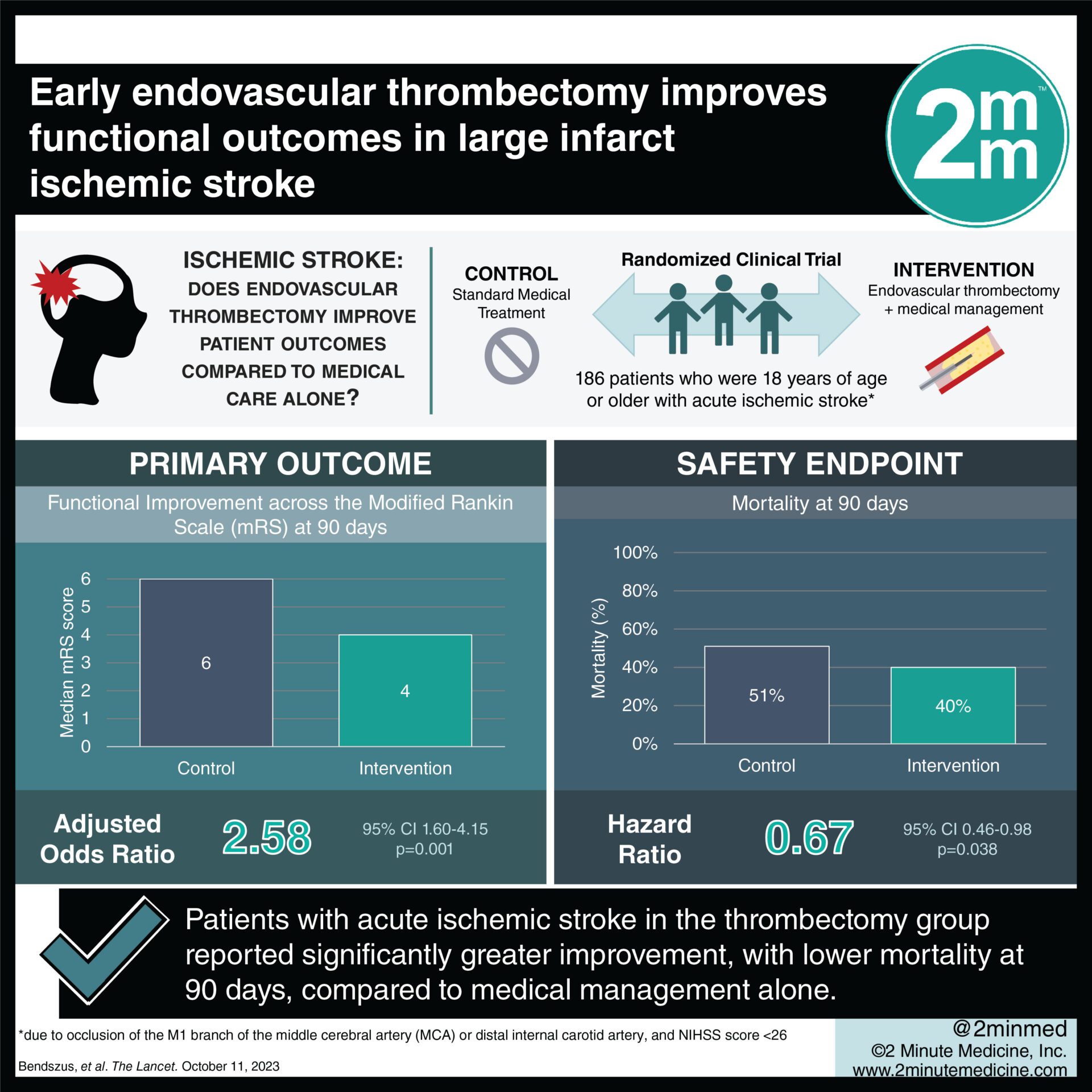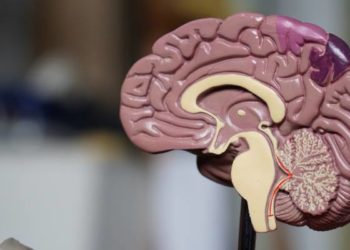#VisualAbstract: Early endovascular thrombectomy improves functional outcomes in large infarct ischaemic stroke
1. Patients in the thrombectomy group reported significantly greater improvement, with lower mortality at 90 days versus medical management alone.
2. Symptomatic intracranial hemorrhage was comparable between groups.
Evidence Rating Level: 1 (Excellent)
Study Rundown: Patients with acute ischemic stroke and large vessel infarct benefit from endovascular thrombectomy. However, previous studies have shown clinical benefits using multimodal imaging while non-contrast CT is predominantly used in practice. This randomized controlled trial aimed to assess the efficacy of endovascular thrombectomy in patients with acute ischemic stroke and large vessel occlusion, with patient selection done using non-contrast CT. The primary outcome was functional improvement across the modified Rankin Scale (mRS) at 90 days, while key secondary outcomes were functional health status and quality of life. According to study results, endovascular thrombectomy resulted in significantly better clinical outcomes, with lower mortality, compared to standard medical treatment. This study was strengthened by a large sample size with adequate follow-up, adding to the validity of the results.
Click to read the study in The Lancet
Relevant Reading: Trial of Endovascular Thrombectomy for Large Ischemic Strokes
In-depth [randomized-controlled trial]: Between Jul 17, 2018, and Feb 21, 2023, 253 patients were selected from 40 hospitals in Europe. Included were patients ≥ 18 years old with acute ischemic stroke, due to occlusion of the M1 branch of the middle cerebral artery (MCA) or distal internal carotid artery, and NIHSS score <26. Altogether, 186 patients (97 in endovascular thrombectomy plus medical management and 89 in medical management alone) were included in the final analysis. The primary outcome of functional improvement at 90 days was significantly greater in the endovascular thrombectomy group compared to standard care, as noted by the mRS scores (adjusted common odds ratio [OR] 2.58, 95% confidence interval [CI] 1.60-4.15, p=0.0001) and lower mortality (hazard ratio [HR] 0.67, 95% CI 0.46-0.98, p=0.038) at 90 days. Symptomatic intracranial hemorrhage was comparable between groups (6% in thrombectomy vs. 5% in medical management). Findings from this study suggest that non-contrast CT-guided thrombectomy is associated with improved functional outcomes in patients with acute ischemic stroke and large vessel occlusion.
©2023 2 Minute Medicine, Inc. All rights reserved. No works may be reproduced without expressed written consent from 2 Minute Medicine, Inc. Inquire about licensing here. No article should be construed as medical advice and is not intended as such by the authors or by 2 Minute Medicine, Inc.






![Maternal cell-free DNA sequencing superior to standard aneuploidy screening [CARE Study]](https://www.2minutemedicine.com/wp-content/uploads/2014/02/47-karyotype-75x75.jpg)

